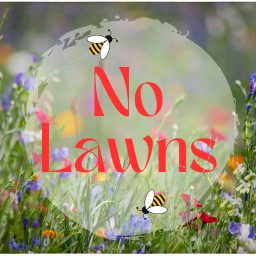

Yes!!!
Here’s a related, short video, from Brad Lancaster in Tucson, Arizona: How wall color can cool (or heat) you by over 25˚F (13˚C), & shade can cool you by over 45˚F (25˚C)


Yes!!!
Here’s a related, short video, from Brad Lancaster in Tucson, Arizona: How wall color can cool (or heat) you by over 25˚F (13˚C), & shade can cool you by over 45˚F (25˚C)


We use a simple homemade compost toilet, saving 150kg of climate change emissions per person each year, and instead of creating sewage, we create compost.


Hence why I said to purify it, and I only mentioned propane in the context of cooking, which is virtually if not always off-grid, so no piping.


As an additional (future) option, I love the idea of creating biochar, capturing the resulting syngas, and purifying the syngas for use as a plug-and-play alternative to propane compatible with their existing cookware.
I think this is sound from ecological and social standpoints. Propane is basically a byproduct of fossil fuel refinement, and as that goes away, so too, will propane, leaving behind a ton of wasted cookware etc. including the embodied carbon in its manufacture. By replacing the propane with another gas that’s a byproduct of sequestration rather than fossil emissions, we save the embodied carbon and financially incentivize sequestration, while the people with cultural attachments to gas cooking can continue on.
DNS, web, mail, WireGuard, etc. I wrote the webserver in about 700 lines of Go and the other software is by other people. Currently I’m rewriting everything in Rust and will write an authoritative DNS server in Rust. Eventually I want all my services to run on my own software (except for WireGuard, which is best in-kernel).
My first professional mailserver was around 1996, with 400 users, up to over 3000 users by 2001. It was awesome then but now mail is the last thing I’d recommend anyone self-host. The ecosystem has been deteriorating for decades at this point.


They want men to have sex with women, and they don’t want women to want it. They are pro-rape of women.
Next steps are going to be ground cover
But everything is going to be native 100% to include the ground cover plants.
Excellent! Heavy mulch + diverse living ground cover is a powerful combination. In my yard you can see the difference between locally-appropriate “native” plants and those that aren’t, as the former just grow and grow, and the latter struggle and require tons of babysitting. I’m slowly letting them die to open up space for plants that actually want to live here. Lesson learned.
When choosing fruit trees, please consider local diseases. For example in the beginning I bought an apple tree from a local nursery, not knowing it was susceptible to fireblight (prevalent in my area). Lo and behold, this year we’ve had lots of rain and that tree is dying from fireblight (I’ve removed the dying parts and will just cut the whole thing down in winter). Starting around 2019 or 2020 I began planting apples and pears that are naturally resistant to fireblight and they’re doing great. So, call some local arborists and ask which fruit tree diseases are prevalent in your area. Skim the wikipedia pages for those diseases to get a sense of what they are, and then look exclusively for trees that are resistant to those diseases. Spend 2 hours to save 2 years (and money too)!
I ate a pawpaw once and it was incredible. They need a lot of shade when young, and unfortunately don’t seem to grow well in my area.
Sorry but I’m not ready to post pics of my place yet, too shy for that.


I did this starting about 5 years ago (still adding and iterating)! Trust me, before long you’re going to be going outside all the time just to be in it, and it’ll fill you with happiness just looking at it from inside. It’ll change your life.
A quick note for your woodchip addition. First, I would “plant the rain” as Brad Lancaster talks about in his books Rainwater Harvesting for Drylands and Beyond [1]. Basically, you do small earthworks in the yard to promote water harvesting and infiltration. This is much easier to do with bare ground. Once you’ve done that bottom layer, I’d strongly recommend laying down contractor’s paper aka builder’s paper [2] and covering that with about 4" (10cm) of woodchips. This paper, which is basically like a huge roll of the same kind of paper from paper grocery bags, will prevent grass from coming up and taking over. Some people use cardboard, which I find extremely tedious to tear down, remove plastic, and lay on the ground in any meaningful quantity. It flops around and won’t stay put when adding the woodchips and it’s really annoying. You should overlap the paper at the edges so grass doesn’t sneak through.
What else are you going to plant? I strongly suggest going wild with locally-appropriate nitrogen fixers, especially those that bear fruit.
Notes:
I’m active in that community but agree there’s too much negativity there, and too much negativity in general. It seems to be improving over time, though.